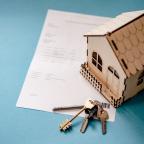
Building Safety Levy could cost developers £455m a year
Building Safety Levy could cost developers £455m a year
New research from Property Inspect reveals that the proposed Building Safety Levy could cost developers up to £455 million a year. The shocking data has led one industry expert to call for the levy's design to be recalibrated to ensure it supports remediation goals without undermining housing delivery.
The Building Safety Levy, introduced by the Building Safety Act 2022, is a proposed tax on new residential buildings in England, paid by the developer, to raise funds that can be used to fund building safety across the country. It forms part of the government's plans to accelerate the pace of safety remediation without burdening homeowners with the remediation costs.
In March 2025, the government postponed the introduction of the levy until Autumn 2026 "to give developers more time to factor levy costs into their plans", but what exactly is the expected cost for England's developers?
Based on the proposed levy charge per square metre in each LA district* and average size of new-build home*, property inspect has estimated what the average levy cost would be per property in all LA districts on land that has been previously developed as well as that which has not.
This analysis reveals that developers in Wandsworth, London, are facing the biggest levy tax bill per property.
In Kensington & Chelsea, the proposed levy per square metre for new-builds on previously undeveloped land is £100.35. Multiplied by the average size of a new-build (67.82 sq m), this creates an estimated levy bill of £6,806. If the property is built on previously developed land, the charge in Kensington & Chelsea stands at £50.17 per square metre, meaning the average levy per property would be £3,403.
In Westminster, the estimated levy cost is £6,647 for buildings on previously undeveloped land, and £3,324 on land which has previously been developed.
This is followed by Hammersmith & Fulham (£6,231 undeveloped, £3,116 developed), Camden (£5,908 undeveloped, £2,954 developed), and the City of London (£5,903 undeveloped, £2,952 developed).
At the other end of the spectrum, new-builds constructed on previously undeveloped land in County Durham are facing an average levy charge of just £861 per property, followed by Hartlepool (£869), Pendle (£889), Middlesbrough (£922), and Burnley (£922).
Total cost per Local Authority
Property Inspect has then looked at new-build housing supply in England over the course of 2023-24 (latest full year data available) and found that across all LA districts, the Building Safety Levy would have netted the UK government an estimated total of £455 million if all homes were built on previously undeveloped land, or £227.5 million if they built on previously developed land.
The LA authority in which developers would have paid the highest combined levy is Wandsworth at £11.2 million for undeveloped land, followed by Newham (£9.3m), Barnet (£9.1m), Westminster (£8.4m), and Ealing (£8.3m).
Sian Metcalfe, Operations Director at Property Inspect, commented:
"At Property Inspect, we recognise the critical importance of ensuring building safety and the rationale behind the Building Safety Levy. The recent announcement delaying its introduction until Autumn 2026, offers the sector valuable breathing space to better assess the policy's structure and long-term implications.
Our analysis has shown how significantly the levy could affect development viability, particularly in high-value urban areas. While we welcome the delay, we also echo the British Property Federation and RICS in urging a more considered, consultative approach during this time, especially regarding the inclusion of build-to-rent and purpose-built student accommodation, which risk being unfairly impacted.
We now have a crucial opportunity to recalibrate the levy's design, ensuring it supports remediation goals without undermining housing delivery."









